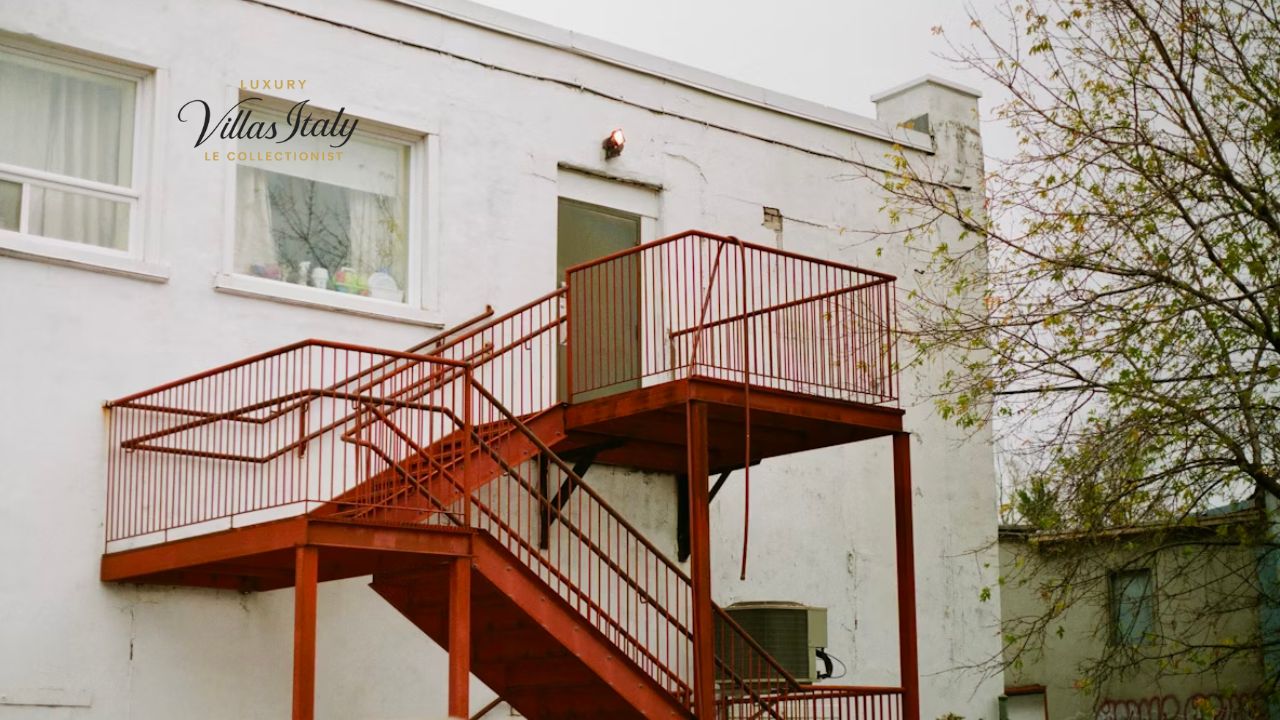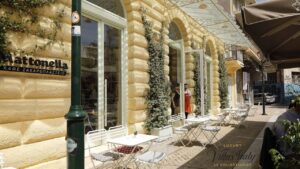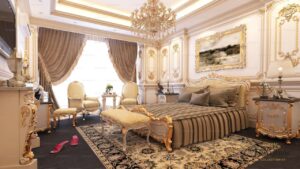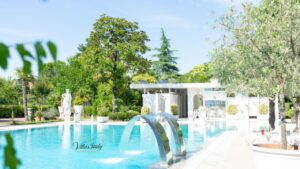Living in a red light district residence on ground floor presents a unique urban experience that challenges conventional notions of neighborhood living. This distinctive lifestyle choice offers both remarkable opportunities and significant considerations that potential residents must carefully weigh. Understanding the realities of ground-floor living in these vibrant, controversial areas can help you make an informed decision about this unconventional housing option.
The allure of these neighborhoods extends far beyond their notorious reputation. Many residents discover that choosing a red light district residence on ground floor provides access to some of the most culturally rich, historically significant, and surprisingly affordable areas in major cities worldwide.
Summary of Red Light District Ground Floor Living
Here’s a comprehensive overview of what defines red light district residence on ground floor living:
| Aspect | Details |
|---|---|
| Average Rent Savings | 20-40% below city center rates |
| Typical Building Age | 100-300+ years (historic districts) |
| Security Considerations | Enhanced police presence, private security common |
| Noise Levels | High during evening/night hours |
| Cultural Amenities | Museums, theaters, galleries within walking distance |
| Transportation Access | Excellent public transit connections |
| Tourist Activity | Year-round high foot traffic |
| Community Demographics | Mixed: long-term locals, young professionals, artists |
| Business Hours Impact | Peak activity typically 8 PM – 3 AM |
| Property Investment Potential | Moderate to high due to central location |
The Reality of Ground Floor Living in Red Light Districts
Choosing a red light district residence on ground floor means embracing a lifestyle that’s far from ordinary. These neighborhoods pulsate with energy, history, and complexity that creates an environment unlike anywhere else in the city.
Historical Context and Modern Evolution
Red light districts have evolved significantly from their historical origins. Today’s red light district residence on ground floor often sits within carefully regulated, tourist-friendly areas that maintain their character while ensuring resident safety and comfort.
Amsterdam’s famous district, for example, has transformed into a carefully managed area where residential living coexists with regulated businesses. Similarly, Hamburg’s Reeperbahn and Tokyo’s Kabukicho have developed into legitimate entertainment and cultural hubs.
The Unique Appeal
What draws people to a red light district residence on ground floor? The answer lies in the authentic urban experience these neighborhoods provide. Residents often cite the vibrant atmosphere, cultural diversity, and central location as primary motivators.
The street-level perspective offers unparalleled access to the neighborhood’s pulse. Unlike higher floors, ground-floor residents become part of the streetscape itself, witnessing the daily transformation of their area from quiet morning hours to bustling nighttime activity.
Practical Considerations for Ground Floor Living
Living in a red light district residence on ground floor requires careful consideration of several practical factors that significantly impact daily life.
Security and Safety Measures
Modern red light district residence on ground floor properties typically feature enhanced security systems. Building management understands the unique challenges and implements comprehensive safety measures:
- Reinforced entry systems with multiple access controls
- 24/7 surveillance cameras covering all common areas
- Direct communication lines to local police precincts
- Well-lit exterior areas and emergency call stations
The constant pedestrian traffic actually provides a form of natural surveillance. Criminal activity often decreases in areas with high foot traffic and police presence.
Noise Management Strategies
Perhaps the most significant challenge of red light district residence on ground floor living is managing noise levels. The evening and nighttime hours bring increased activity that can impact sleep and daily routines.
Successful residents employ various strategies:
- High-quality soundproofing windows and doors
- White noise machines or sound-dampening techniques
- Adjusting personal schedules to accommodate neighborhood rhythms
- Creating interior spaces that buffer street noise
Privacy Considerations
Ground-floor windows face unique privacy challenges in busy districts. Red light district residence on ground floor dwellers must balance natural light with personal privacy through creative window treatments and strategic interior design.
Real Resident Experiences and Reviews
Understanding life in a red light district residence on ground floor becomes clearer through firsthand accounts from actual residents.
Positive Resident Testimonials
★★★★☆ – Marco, Amsterdam resident for 3 years:
“Living in my red light district residence on ground floor has been incredible. Yes, it’s noisy on weekends, but the location is unbeatable. I walk to work, amazing restaurants are everywhere, and the rent is surprisingly reasonable for the city center.”
★★★★★ – Sarah, Hamburg resident for 2 years:
“People think I’m crazy, but my red light district residence on ground floor is perfect. The neighborhood has such character, and contrary to stereotypes, it feels very safe. The police presence is actually higher than in many ‘regular’ neighborhoods.”
★★★★☆ – Kenji, Tokyo resident for 18 months:
“The energy here is addictive. My red light district residence on ground floor puts me right in the heart of everything. The convenience stores never close, transportation is perfect, and the cultural experiences are endless.”
Honest Challenges Shared
★★★☆☆ – Lisa, Amsterdam former resident:
“I loved the location of my red light district residence on ground floor, but the constant crowds became overwhelming. Weekends were particularly challenging with tourists peering into windows. It’s not for everyone.”
★★☆☆☆ – Antonio, Barcelona resident:
“The rent was great for my red light district residence on ground floor, but the late-night noise was brutal. Even with good windows, the street activity made sleeping difficult. I eventually moved to a quieter area.”
Financial Aspects and Investment Potential
The economic considerations of red light district residence on ground floor living extend beyond monthly rent payments.
Cost-Benefit Analysis
Rental costs for a red light district residence on ground floor typically range 20-40% below comparable properties in upscale city center areas. This savings can be substantial in expensive cities like Amsterdam, London, or New York.
Additional financial benefits include:
- Reduced transportation costs due to central location
- Access to affordable dining and entertainment options
- Lower utility costs in older, well-insulated buildings
- Potential subletting opportunities in tourist-heavy areas
Long-term Investment Considerations
Properties in established red light districts often show steady appreciation due to their central location and historical significance. A red light district residence on ground floor can represent a solid investment opportunity for those comfortable with the lifestyle.
However, factors like changing city regulations, gentrification pressures, and tourism fluctuations can impact property values. Careful market research is essential before making long-term commitments.
Cultural and Social Dynamics
Living in a red light district residence on ground floor means becoming part of a unique social ecosystem that blends locals, workers, tourists, and fellow residents.
Community Integration
Despite misconceptions, many red light districts foster tight-knit residential communities. Long-term residents often develop strong neighborhood bonds, supporting each other through the unique challenges of district living.
Local community organizations frequently organize events that bring residents together, creating social networks that transcend the area’s commercial reputation.
Cultural Enrichment Opportunities
A red light district residence on ground floor provides unparalleled access to cultural experiences. These neighborhoods often feature:
- Historic architecture and preservation efforts
- Independent art galleries and performance spaces
- Diverse culinary scenes reflecting international influences
- Museums dedicated to local history and culture
Practical Tips for Prospective Residents
Successfully transitioning to a red light district residence on ground floor requires preparation and realistic expectations.
Pre-Move Research
Before committing to a red light district residence on ground floor, conduct thorough neighborhood research:
- Visit at different times of day and week to understand activity patterns
- Connect with current residents through online forums or local groups
- Research local regulations and any planned development changes
- Evaluate transportation options for your daily commute
- Assess nearby amenities like grocery stores, pharmacies, and services
Essential Preparations
Successful red light district residence on ground floor living requires specific preparations:
- Invest in quality window treatments for privacy and light control
- Research building security features and emergency procedures
- Establish relationships with local police community liaisons
- Identify 24-hour services and emergency resources nearby
- Plan storage solutions for a potentially compact living space
Future Trends and Developments
The landscape of red light district residence on ground floor living continues evolving as cities balance preservation with modernization.
Urban Planning Initiatives
Many cities are implementing comprehensive planning strategies that improve residential conditions while maintaining district character. These initiatives often include:
- Enhanced street lighting and public safety measures
- Noise reduction regulations during residential hours
- Mixed-use development that supports both residents and businesses
- Green space integration and pedestrian-friendly improvements
Technology Integration
Modern red light district residence on ground floor properties increasingly incorporate smart home technology to address unique living challenges. Apps for noise monitoring, security systems, and community communication help residents navigate daily life more effectively.
Frequently Asked Questions
Is it safe to live in a red light district residence on ground floor?
Yes, most established red light districts maintain high safety standards with regular police patrols and enhanced security measures. The constant foot traffic and business activity actually deter most criminal behavior. However, residents should remain aware of their surroundings and take standard urban safety precautions.
How do I handle privacy concerns in a red light district residence on ground floor?
Privacy management requires strategic planning with quality window treatments, strategic furniture placement, and potentially installing security films on windows. Many residents find that tourists are generally respectful, and privacy concerns diminish as you adapt to the environment.
What about noise levels in a red light district residence on ground floor?
Noise is typically the biggest challenge, especially during evening and weekend hours. Successful residents invest in soundproofing, adjust their schedules, and often discover that the vibrant atmosphere becomes part of the neighborhood’s appeal rather than just a nuisance.
Are red light district residence on ground floor properties good investments?
Properties in established red light districts often appreciate steadily due to central locations and historical significance. However, investment potential depends on local regulations, tourism trends, and gentrification patterns. Professional real estate analysis is recommended.
How do neighbors and visitors react to my living choice?
Reactions vary widely, from curiosity to concern. Many residents find that explaining the practical benefits (location, cost, culture) helps others understand the decision. Over time, most people recognize the urban lifestyle advantages.
What amenities are typically available near a red light district residence on ground floor?
These areas usually offer excellent amenities including diverse dining options, cultural attractions, public transportation, and 24-hour services. The central location provides convenient access to city resources that suburban areas often lack.
Admin Recommendation
Luxury Villas in Greece: Discover Le Collectionist’s Exclusive Retreats
Luxury Villas Italy Le Collectionist: A Dream Worth Indulging












